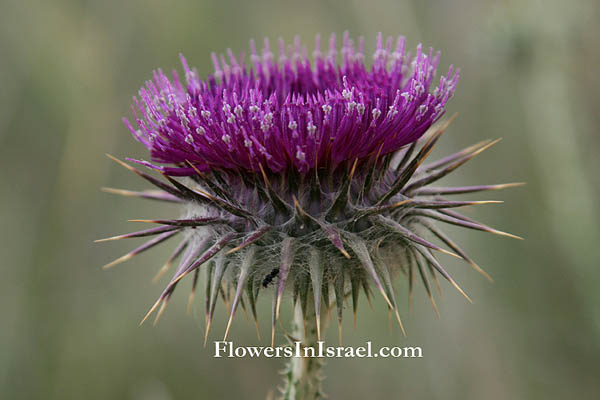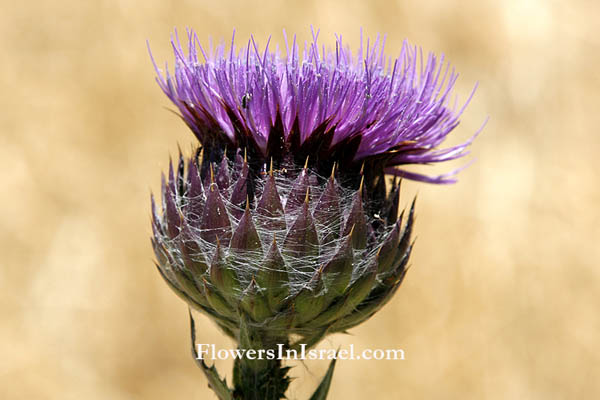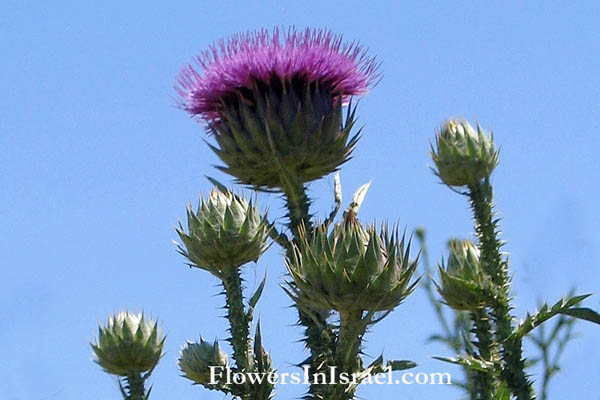Hebrew: חוחן הקנרס, Arabic: اقسون حرفشي الرأس
| Scientific name: | Onopordum cynarocephalum Boiss. et Blanche | |
| Common name: | Artichoke Cotton-thistle | |
| Hebrew name: | חוחן הקנרס | |
| Arabic name: | اقسون حرفشي الرأس | |
| Plant Family: | Compositae / Asteraceae, מורכבים |

|
| Life form: | Hemicryptophyte | |
| Spinescence: | Leaves, bracts | |
| Leaves: | Alternate, rosette, entire, dentate or serrate, spinescent | |
| Flowers: | Purple, spinescent bracts | |
| Flowering Period: | May, June, July | |
| Habitat: | Nutrient-rich soils, ruderal | |
| Distribution: | Mediterranean Woodlands and Shrublands, Semi-steppe shrublands, Montane vegetation of Mt. Hermon | |
| Chorotype: | Mediterranean | |
| Summer shedding: | Ephemeral |

Derivation of the botanical name: Onopordum, an early Latin name for a group of thistles, derived from the Greek onos, meaning "ass", and porde, flatulence, because of the belief that the plant caused flatulence in donkeys. cynarocephalum, kynara or kinara, kynaros akantha, the Greek for a spiny plant; Latin cinara, for a kind of artichoke and for a native of the island of Cinara, in the Aegean Sea, now Zinara; -cephalum, headed; cynara headed. The Hebrew name: חוחן, khokhan, derivated from חוח, khokh, briar, thorn; related to Aramaic: חוחא, Akkadian: hàh ( = thorn), hahhu, hàyahu ( = thorn).

|